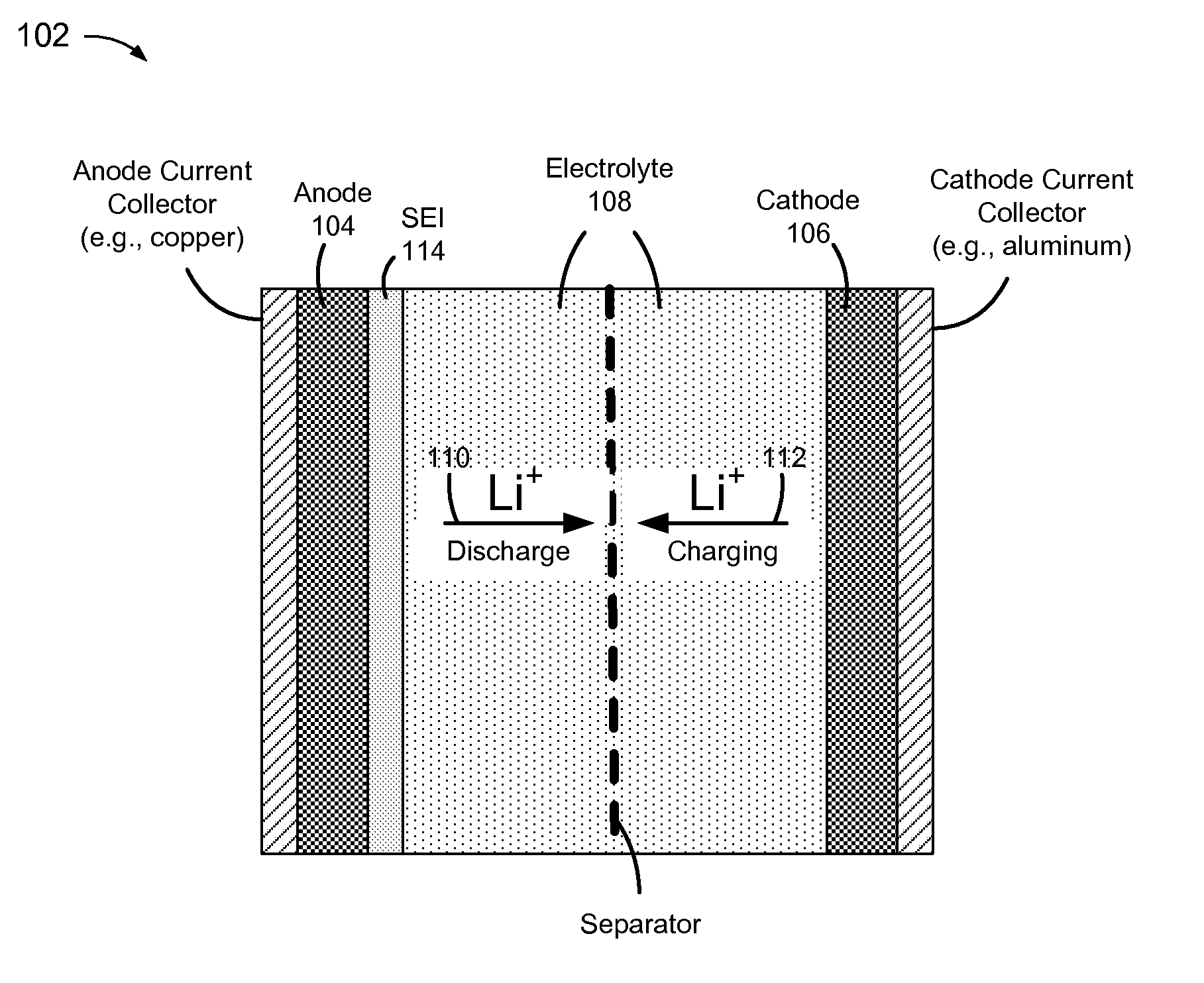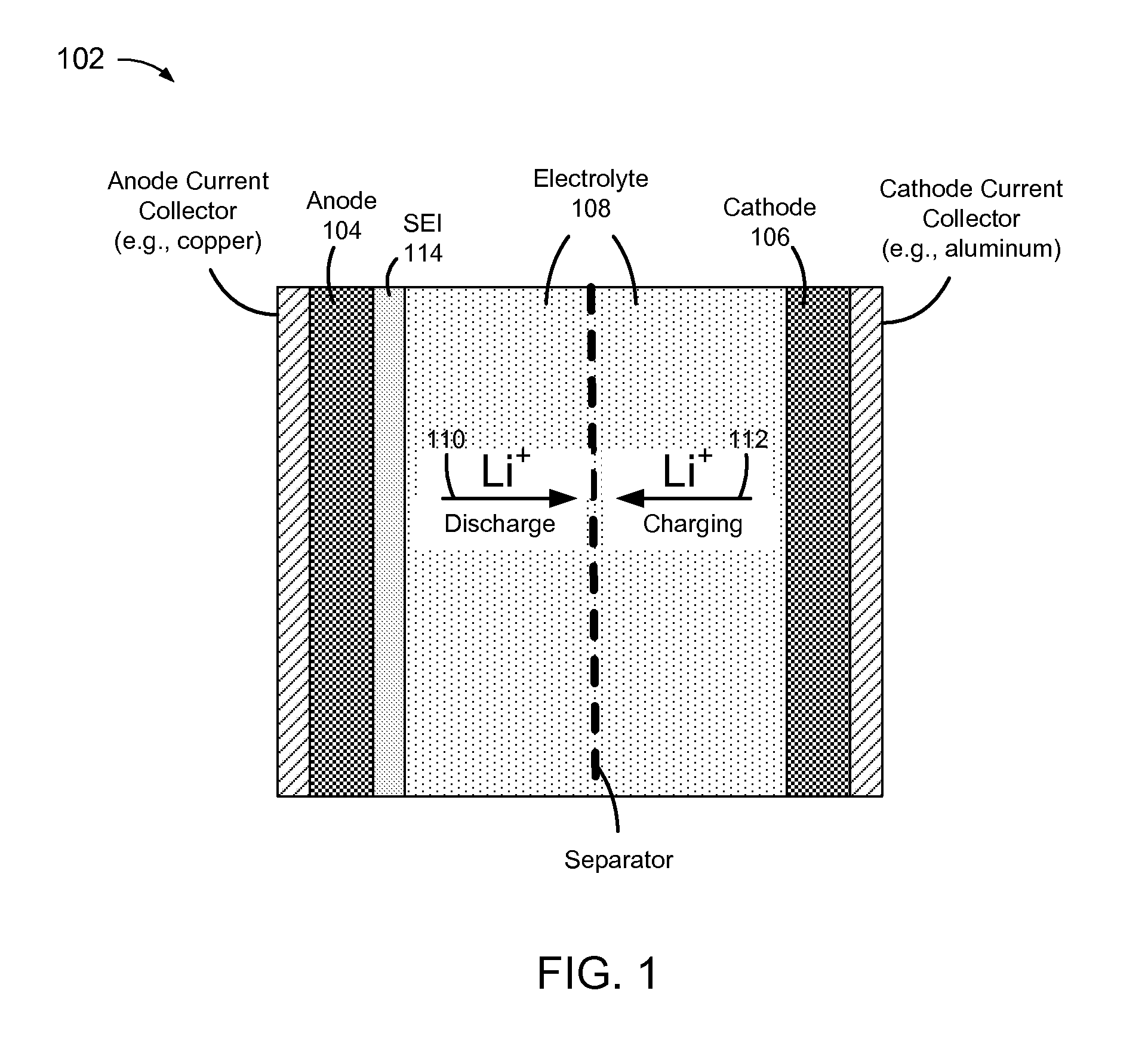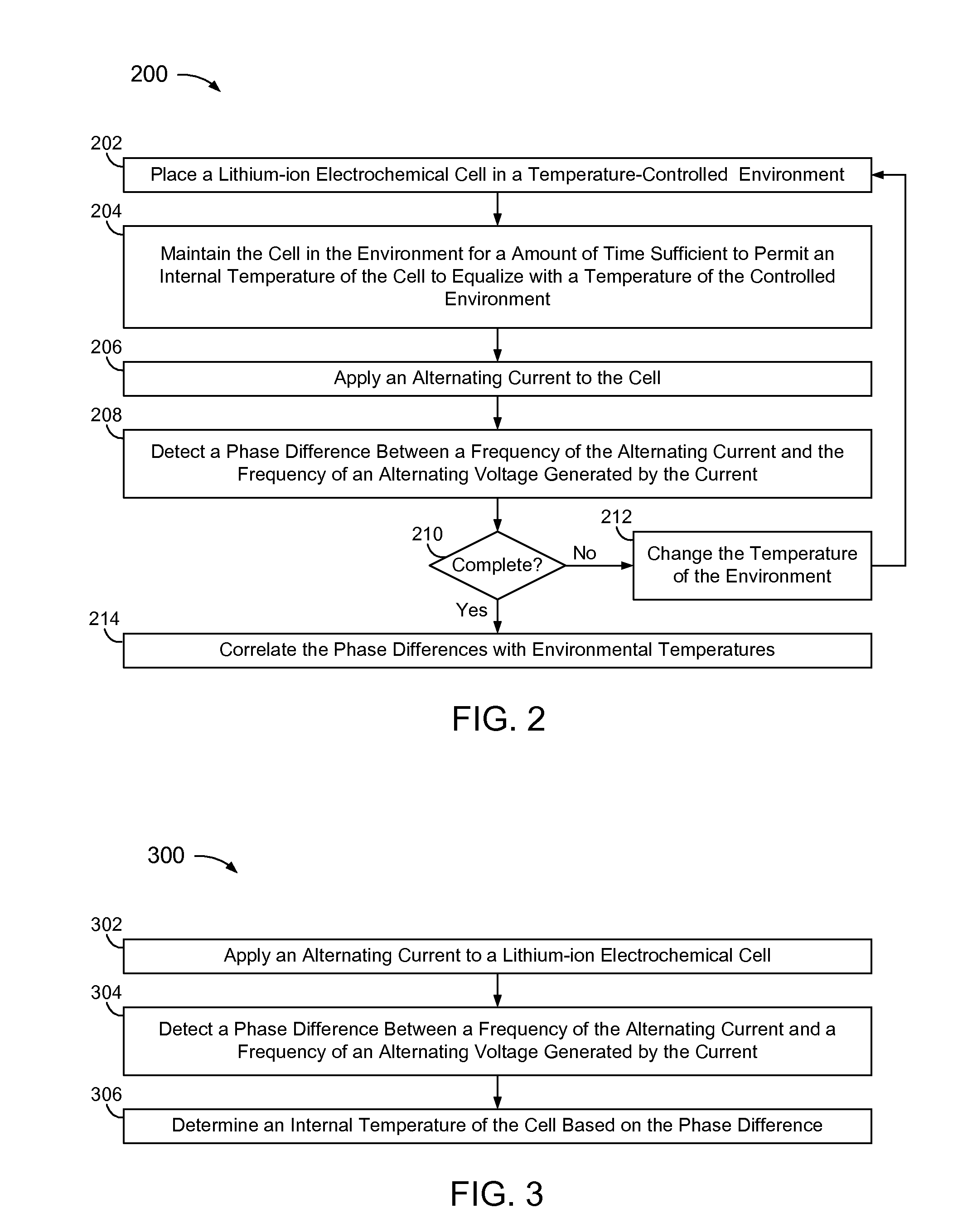Battery phase meter to determine internal temperatures of lithium-ion rechargeable cells under charge and discharge
a lithium-ion rechargeable cell and internal temperature technology, applied in the direction of batteries, cell components, instruments, etc., can solve the problems of initial damage, electrolyte degradation, electrolyte degradation, etc., and achieve the effect of reducing the initial damag
- Summary
- Abstract
- Description
- Claims
- Application Information
AI Technical Summary
Problems solved by technology
Method used
Image
Examples
Embodiment Construction
[0028]FIG. 1 is a block diagram of a lithium-ion cell 102, including electrodes 104 and 106, and an electrolyte 108 to provide a conducting medium between electrodes 104 and 106. In FIG. 1, electrode 104 is illustrated as an anode 104, and electrode 106 is illustrated as a cathode 106.
[0029]Rechargeable, or secondary lithium-ion cell chemistry is based on intercalation and de-intercalation, or insertion and extraction of lithium ions into and out of open crystalline or amorphous structures, or lattices of anode 104 and cathode 106.
[0030]Electrolyte 108 may include a non-aqueous organic lithium salt dissolved in an organic solvent, and electrodes 104 and 106 may be fabricated from materials for which lithium ions can migrate into and out of. Such electrodes are called intercalation hosts.
[0031]Anode 104 made include carbon, such as graphite or crystalline or amorphous silicon or alloys of silicon with elements such as gallium.
[0032]Cathode 106 may include a metal oxide, such as, with...
PUM
| Property | Measurement | Unit |
|---|---|---|
| frequency | aaaaa | aaaaa |
| frequency | aaaaa | aaaaa |
| frequency | aaaaa | aaaaa |
Abstract
Description
Claims
Application Information
 Login to View More
Login to View More - R&D
- Intellectual Property
- Life Sciences
- Materials
- Tech Scout
- Unparalleled Data Quality
- Higher Quality Content
- 60% Fewer Hallucinations
Browse by: Latest US Patents, China's latest patents, Technical Efficacy Thesaurus, Application Domain, Technology Topic, Popular Technical Reports.
© 2025 PatSnap. All rights reserved.Legal|Privacy policy|Modern Slavery Act Transparency Statement|Sitemap|About US| Contact US: help@patsnap.com



